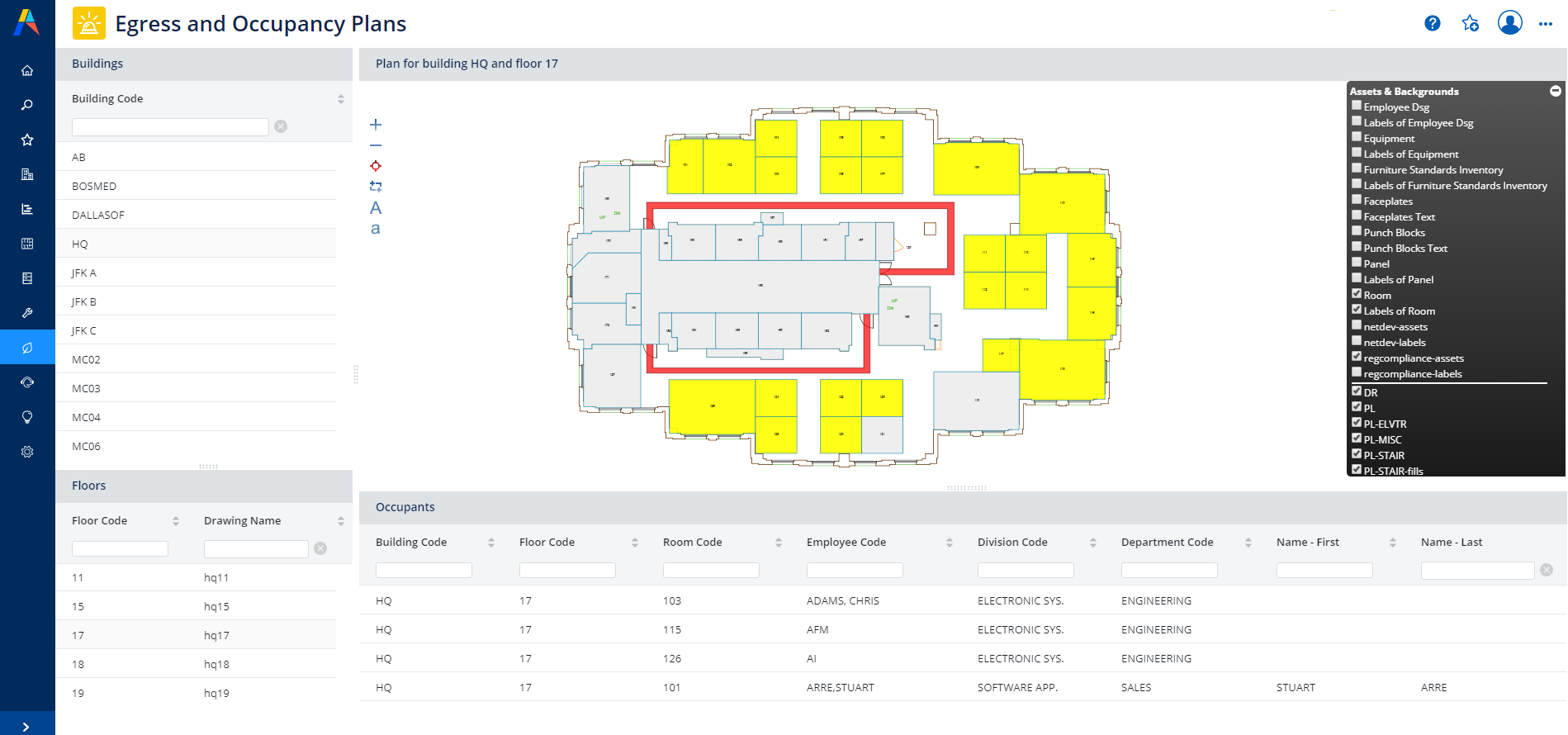Getting Results with Archibus
Emergency Preparedness
Workplace emergencies—whether due to natural conditions such as blizzards and floods, or man-made situations such as chemical spills, burst pipes, or gas leaks—require immediate access to facilities information in order to protect life, minimize damage, and recover critical business functions. Since workplace emergencies typically require personnel to vacate the building, remote access to facilities data and drawings using the Web is key.
First, you establish the data that you will need in the event of an emergency: emergency contact lists, emergency escalation lists, egress plans, hazardous material plans, facility systems and their dependent systems, and so forth.
If an emergency does occur, you provide this facility data to first responders, to broadcast information on staff, and to begin the recovery process. Remote access over the Web is particularly useful in emergencies because you typically cannot enter the building to access your database. Sites often mirror their facilities databases and Web server at a remote location so that if the primary database and Web server are disabled during an emergency, they can remotely access and update the data using Web Central.
With the Emergency Preparedness application, you document the areas in your facility holding hazardous materials. For information on the ways that other Archibus applications support the management of hazardous materials, see Managing Hazardous Materials with Archibus Applications.

The following users are typically involved in entering data to be used in a building emergency.
|
User |
Tasks |
|---|---|
|
First Responders |
During the emergency, use floor plan drawings to locate staff, egress routes, and hazardous materials. |
|
Emergency Response and Recovery Team |
During the emergency, assist first responders by accessing floor plan drawings. Access an employee’s contact list to notify them concerning employee condition. Access key vendors and government agencies (contacts) to notify them of the emergency and status. Develop advisory bulletins and post on the Web or email so that staff and contacts know how to proceed. Access an emergency escalation list -- a listing of employees who have authority in an emergency to expedite decisions and purchases for each recovery team to quickly approve decisions and purchases necessary for returning the division to an operational mode. |
|
General Staff |
From home, log on to the Web to check the Employee Advisory Bulletins for information on the current status and contingency plans. You might also receive this by email. |
|
Assessment Team |
Once the emergency is contained, inspect individual areas and note the condition of facility systems, equipment, and rooms. This information is vital to managers and recovery team members in determining how to best resume operations. |
|
Manager |
Review the site status reports prepared by the assessment team to determine how restore operation of the business unit. Write advisory bulletins for their division and department managers to keep them abreast of the emergency and recovery efforts. Post this or send by email to employees, vendors, and other contacts. |
| Business Process Owner | Update or define basic data such as departments, divisions, buildings and rooms, so that this data is available as choices for above users completing forms over the Web. |
| CAD User | Work in AutoCAD to add egress routes, hazardous material plans, sprinkler zones, HVAC zones, emergency lighting zones, and other zone information to floor plan drawings. |